Implementation of Records and Archives Centre digitisation plan
Features
Since early 2021, with the advice and guidance of the Records and Archives Committee, I have been implementing a plan to digitise key Records and Archives Centre series. This plan goes beyond the old and interesting records in the collection – although these are being prioritised as well – and includes records that are business-critical to the continued operation of the Church,” says Diocesan Archivist Michael Rogers

In my previous article on St. Thomas Church in Newtown (Maryborough), I included an image from the Diocesan Property Register. I was able to source this image from my desk, without having to take the register off the shelf. The register (and many others) has been scanned through the Archives’ Digitisation Programme.
Digitising records not only improves access but also enhances the history of the organisation and the decision-making processes that sustains it. It is often the case that information is only recorded in one place – the physical paper record. If the paper is not properly and securely stored, there is the potential for a heightened risk of historically important information being lost or destroyed. Relying solely on hard copy files also reduces the likelihood of the record being accessed because of lack of awareness about its existence.
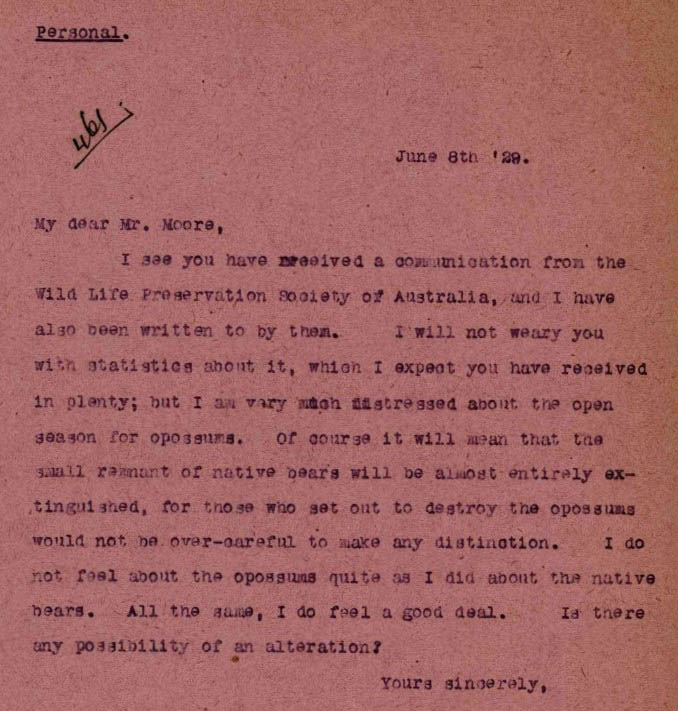
Copy of letter from Archbishop Sharp to Premier of Queensland (Arthur Edward Moore) noting recent Cabinet Decision to approve the hunting and trapping of possums (and the potential danger to Koalas), dated 8 June 1929
Since early 2021, with the advice and guidance of the Records and Archives Committee, I have been implementing a plan to digitise key Records and Archives Centre series. This plan goes beyond the old and interesting records in the collection – although these are being prioritised as well – and includes records that are business-critical to the continued operation of the Church.
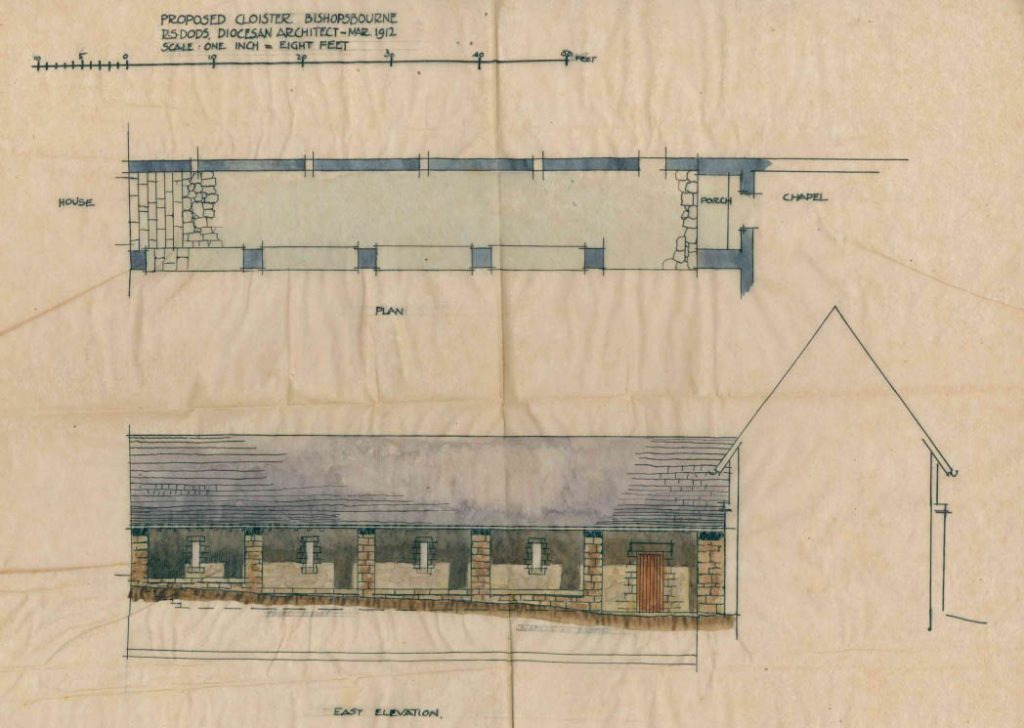
Original Plan by Robin Dodds for proposed cloister between The Chapel of the Holy Spirit and Old Bishopsbourne at Milton. From Correspondence file of Archbishop Donaldson (March 1912)
Digitised records, along with records that have been created in digital format, are superior to physical records because they can be accessed from any location at any time. Copies can also be held and “backed up” to reduce the risk of loss. Consequently, Diocesan officials should scan all incoming physical documents for which a record needs to be kept – especially those that are business critical to the Church.
“Business critical” usually means those records documenting key decisions of parishes, commissions, Bishops, and Archbishops, as well as the management of the land, and bequests and trusts relating to the land or building. To this end, the first series scanned were the Property Registers of the Diocese, and the papers of Episcopal leaders from Tufnell to Arnott.
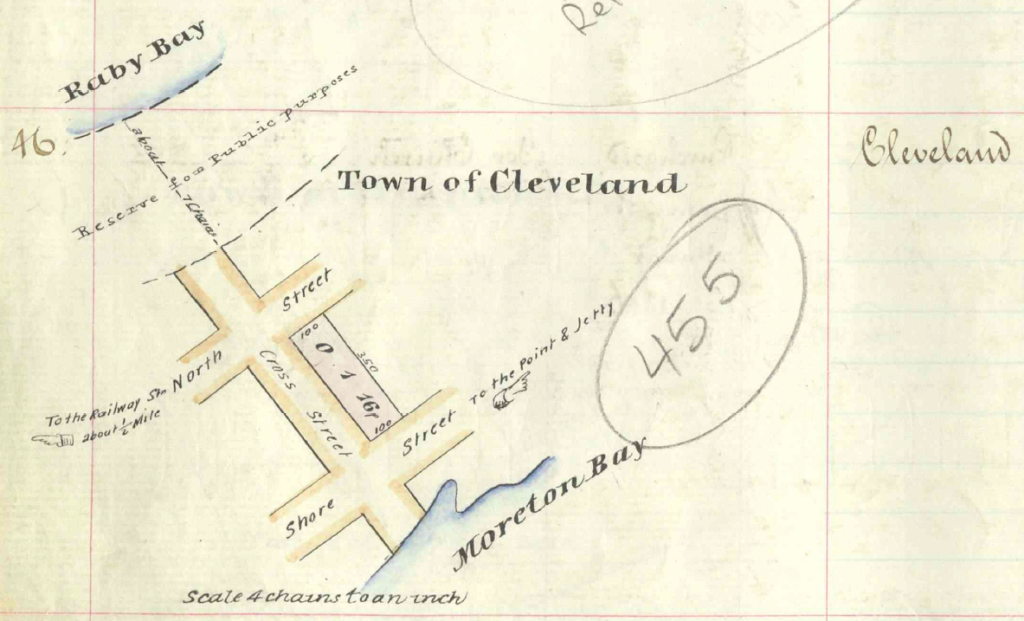
Extract from scanned Property Register showing land at Cleveland gifted to the Diocese for the use of a church in 1870 (St Paul’s)
The Property Registers that have been scanned date from the 1870s to the 1960s. They record the location and certificate of title detail, and usually also record how the Diocese acquired the land. In many cases the records show that land was gifted by the owner or next-of-kin, while sometimes also recording the purchase price, later valuations, and when/how the land was sold.
Scanning the registers has improved access to them, while simultaneously ensuring that the original physical register stays on the shelf untouched, thus decreasing the risk of damage or deterioration and potential loss. The registers are also securely accessed when needed by the Diocesan Property Team – and I have already received good feedback from colleagues regarding their value in determining ownership and title.
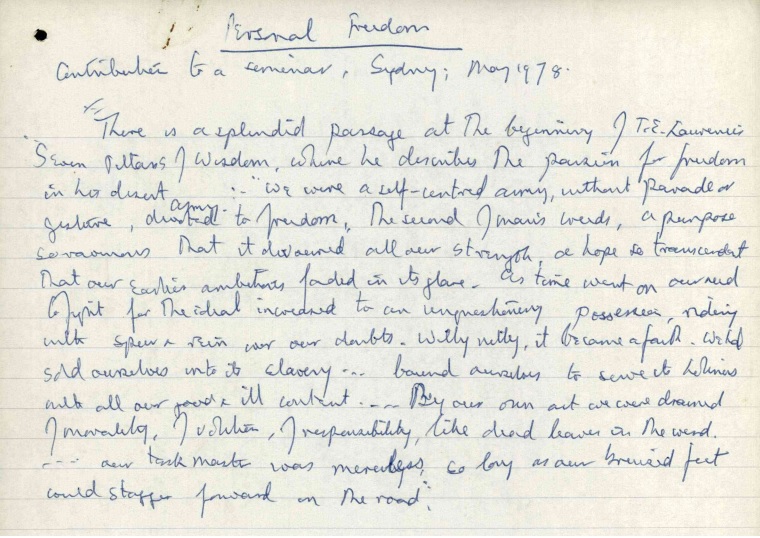
Handwritten note on Personal Freedoms noting T.E. Lawrence within papers of Archbishop Arnott, dated May 1978
The Archbishops’ papers, which mainly contain correspondence, have also proven to be a treasure trove of information. Information in physical correspondence is often only discoverable when a long proactive search is undertaken. By scanning the material, one can undertake a text search of the digitised documents because the scans are being created with optical character recognition (OCR) software. There is still the issue of hand-written text, which cannot be recognised using current software. Technology to recognise handwriting is gradually improving, and while additional work will be needed to provide context to these letters, the printed word does allow hints to additional information not discovered through standard text searches.
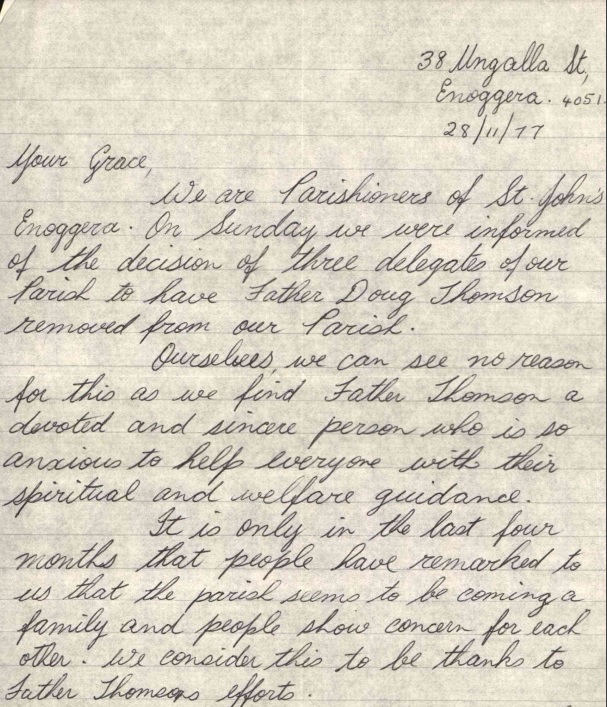
Letter of Petition to Archbishop Arnott from parishioners of Enoggera, dated 28 November 1977
As one would expect, a good portion of Archbishop papers contains correspondence between clergy and parishioners and the Archbishops. Much of this is routine and complimentary. While some show internal rifts, others show the close relationship developed between the clergy and their flocks. In certain cases, a petition is included, providing an excellent guide about who was participating in parish affairs at the time.
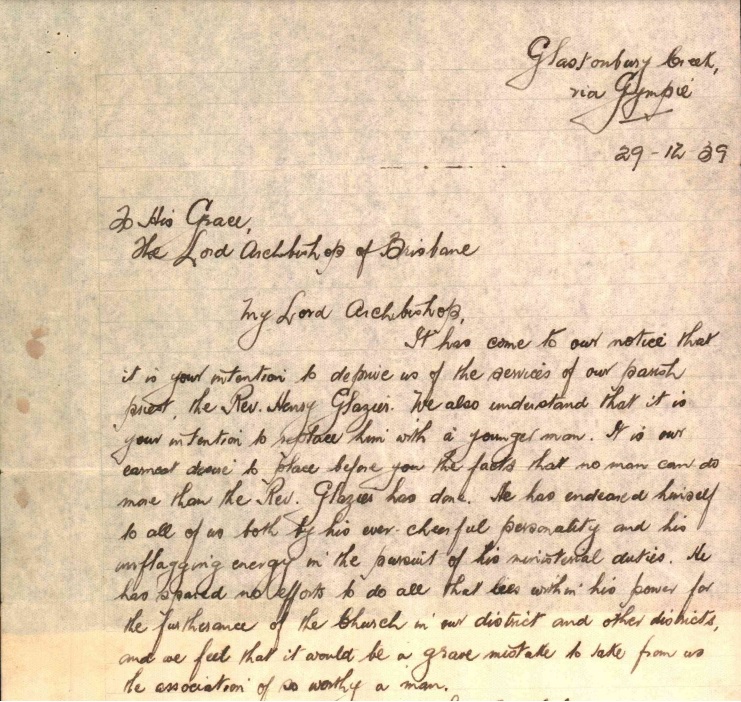
Letter of Petition to Archbishop Wand from parishioners of Gympie, dated 29 December 1939
The papers also document and provide context to past decisions of individual Archbishops. A key part of the Archbishop’s functions is how they aided clergy and the laity they served. While most of the general business and relevant correspondence are registered in Diocesan Registry files, the Archbishops’ papers also offer glimpses into the decision-making process and provides hints about local history and forgotten memories.
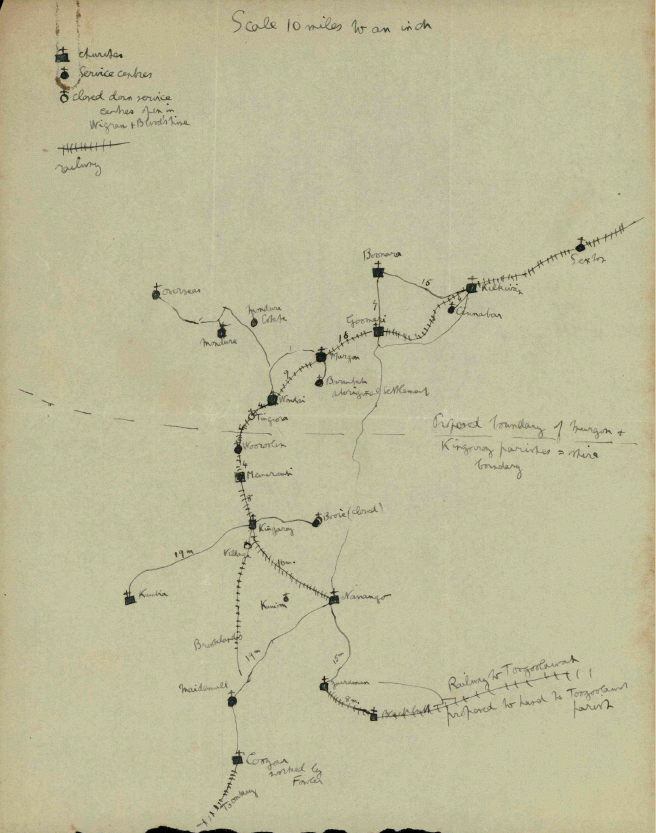
Hand-drawn map of Kingaroy and Murgon area noting churches in area and proposed boundary for new Parish of Murgon, Ca. 1917
The image above was included with correspondence from the priest at Nanango (The Rev’d Osric Oberlin-Harris to Archbishop Donaldson. The correspondence noted the widespread nature of the parish and the difficulty of providing services to all the parish centres. The correspondence and the map indicate the desire to create a new Parish of Murgon and to have a priest be responsible for those churches. The Parish of Murgon (initially called Kilkivan) was indeed created in 1919 (encompassing Kilkivan, Boonara, Mondure, Goomeri, and Wondai) – other churches at Tingoora and Barambah were added soon after.
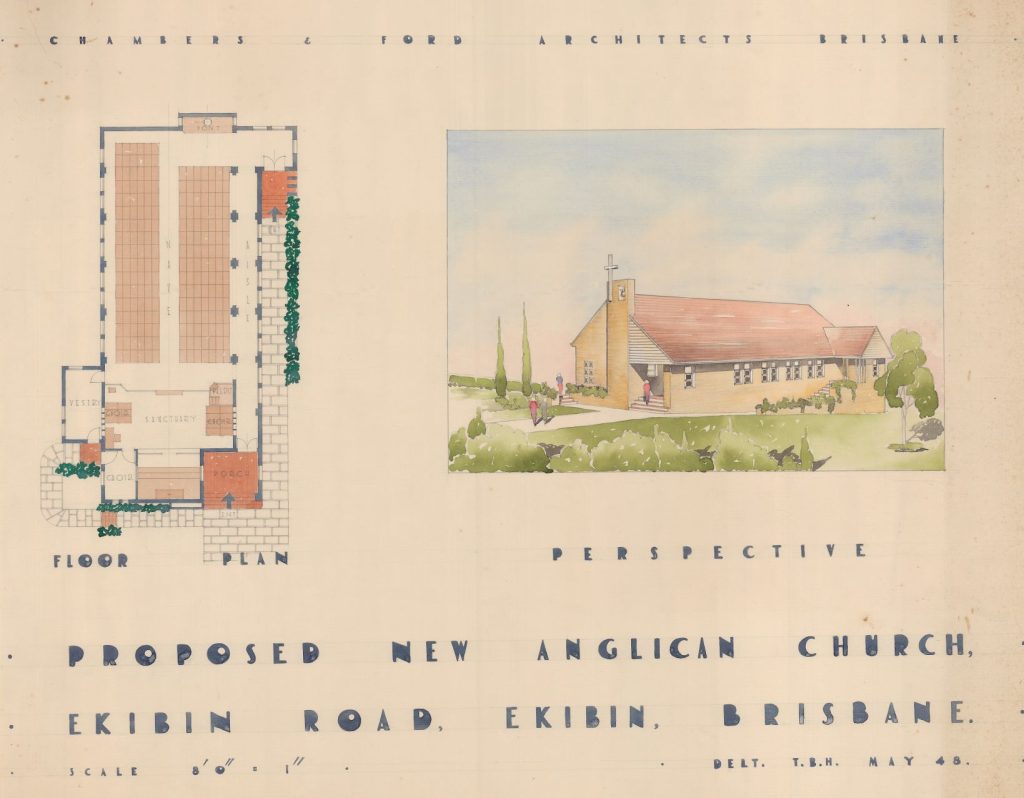
Floor plan and perspective for proposed new church at Ekibin, May 1948
At the time of writing this feature, I am scanning Architectural Plans for the Diocese. These include plans for schools, homes, and colleges. The scanned plans have already proven useful in contemporary maintenance and redevelopments projects, helping to reduce the cost of reproducing new site and building plans.
As with many records, it is often a drawing or image that draws the eye, particularly for display purposes. Despite this, it is often the typed or written note that conveys the most important message and provides context to the decisions of the organisation, and the respective relationships.
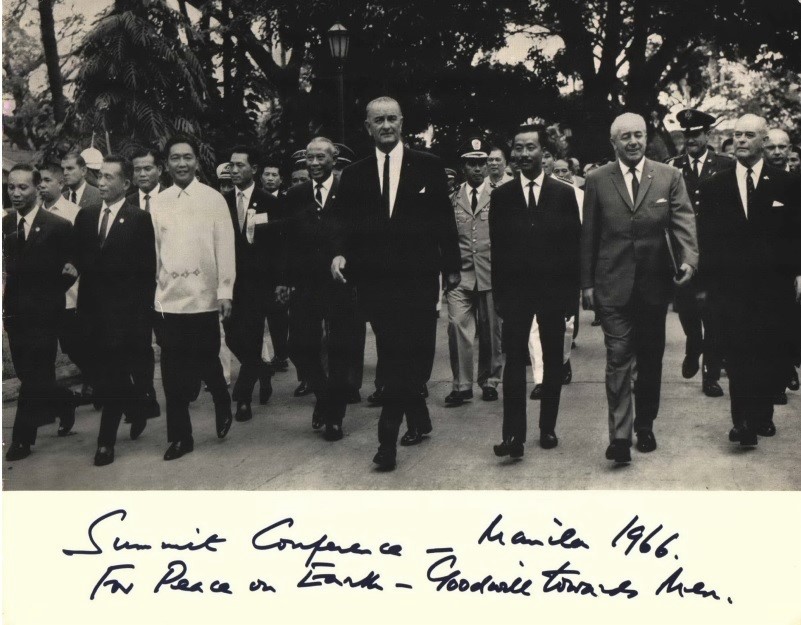
Front of Christmas card from Prime Minister Harold Holt to Archbishop Strong, dated 19 December 1966
Editor’s note 29/07/2022: Text updated.






